A Tower Grows in Tokyo: Azabudai Hills to Open in November
Newsfrom Japan
Lifestyle Society Architecture Environment- English
- 日本語
- 简体字
- 繁體字
- Français
- Español
- العربية
- Русский
The Latest in Mori Building’s “Hills” Series
The 64-story, 330-meter-tall Mori JP Tower, to be officially opened in November 2023 in Minato, Tokyo, was unveiled at a press conference on August 8. The views from the building are overwhelming. It overlooks even the nearby Tokyo Tower (333 meters tall), standing downhill to the southeast, and also offers views of Rainbow Bridge, Odaiba, and the Umihotaru shopping mall and parking area on the Tokyo Wan Aqua-Line Expressway toll road across Tokyo Bay.
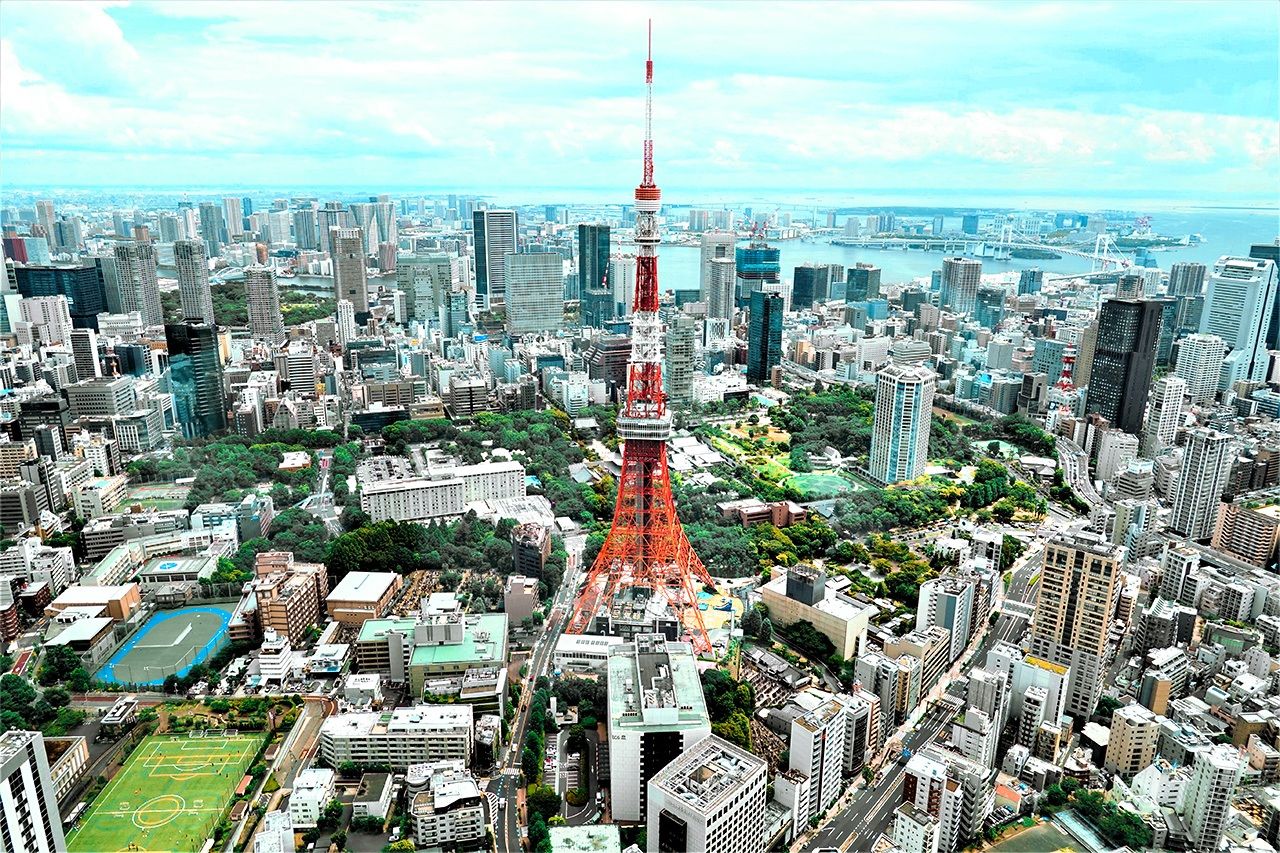
View from the fifty-second floor office area of Mori JP Tower. Azabudai Hills is 350 meters northwest of Tokyo Tower, about 10 minutes on foot. (© Amano Hisaki)
Azabudai Hills is the latest in the “Hills” series built by major Japanese developer and real estate firm Mori Building. The Hills series aims to create “vertical garden cities,” multistory, compact complexes combining high-rise buildings with green surroundings and incorporating work, residence, and dining functions, the necessities for city living, all within walking distance.
The first installment was Ark Hills, opened in 1986. The name came from the initials “Akasaka-Roppongi Knot,” derived from the location at the intersection of the Akasaka and Roppongi districts, with the complex forming a “knot” tying them together. It contains luxury apartments, offices, retail space, restaurants, a television studio, a concert hall, and rooftop gardens.
The second installment was Roppongi Hills, touted as a cultural center, opened in 2003, centered around the 238-meter Mori Tower. The complex’s four Roppongi Hills residence towers gave birth to the Japanese slang “Hills tribe,” referring to the affluent residents. The Mori Art Museum on the fifty-third floor holds exhibitions focused on contemporary art, fashion, architecture, design, photography, and cinema.
The third development, Toranomon Hills, opened in 2014, promoted as a global business center. It is the venue for the Innovation Leaders Summit, Asia’s largest open innovation conference.
Connecting People amid Greenery
Azabudai Hills, the fourth Hills development, is situated adjacent to Ark Hills, and between Roppongi Hills and Toranomon Hills. Because it is positioned between distinctly cultural and business areas, it is intended to showcase the future Hills format, incorporating all that has been learned through the previous developments, according to the company’s president, Tsuji Shingo. The concept of the development is “a modern urban village and a huge open space filled with lush greenery that brings people together.”
The company’s vision is for Azabudai Hills to become a “green and wellness” community “where people live harmoniously with nature and lead healthy and fulfilling lives.” The unique green space, measuring around 64,000 square meters, accounts for 40% of the site area and surrounds the complex facilities. The development incorporates the Keiō University Center for Preventive Medicine, with state-of-the-art medical equipment and staff offering comprehensive medical checkups and physical examinations to support and promote the wellbeing of residents.
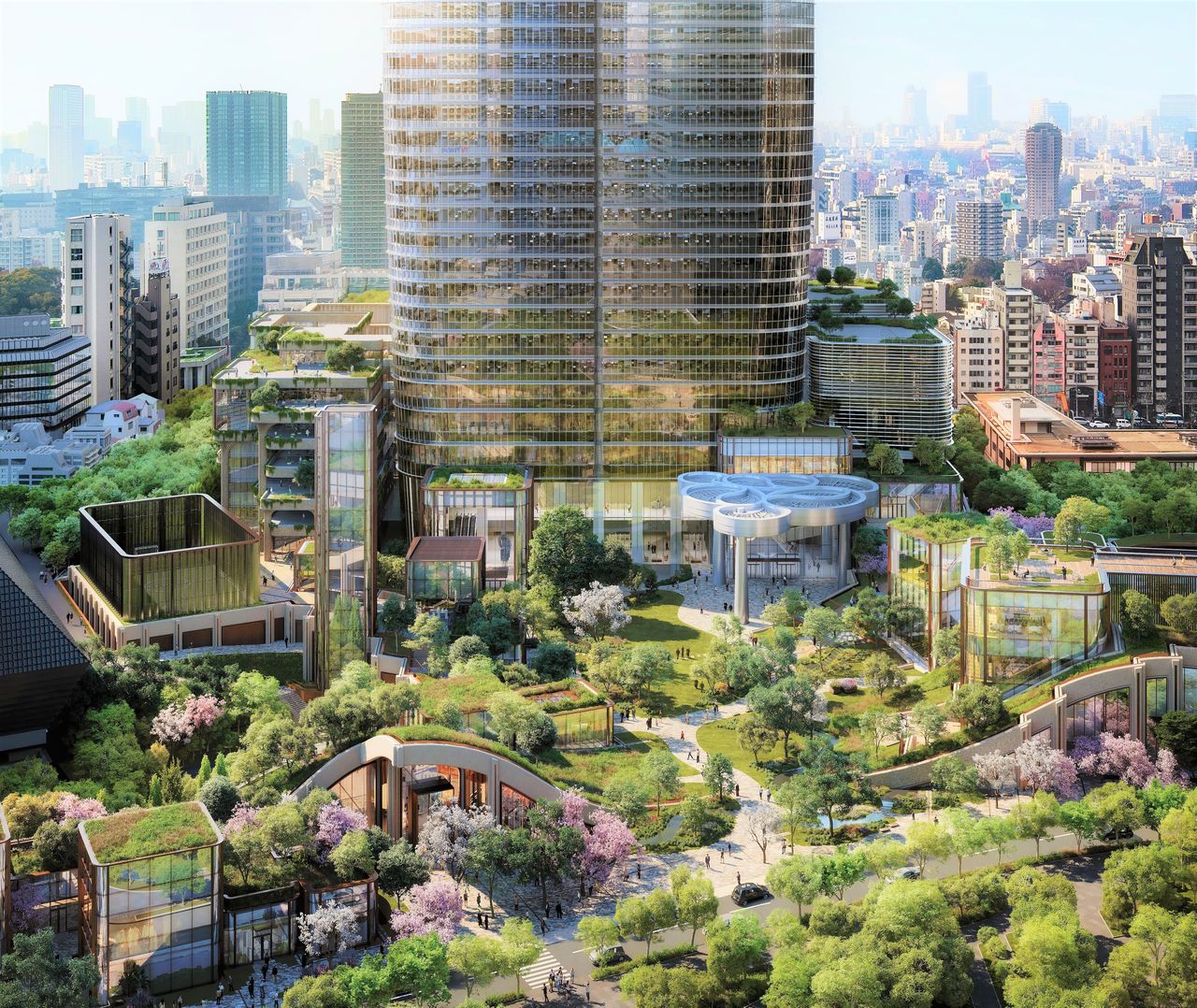
The development takes advantage of the varied topography of the site by growing some 320 plant species on the grounds and the rooftops of low-rise buildings. (© DBOX for Mori Building/Azabudai Hills)
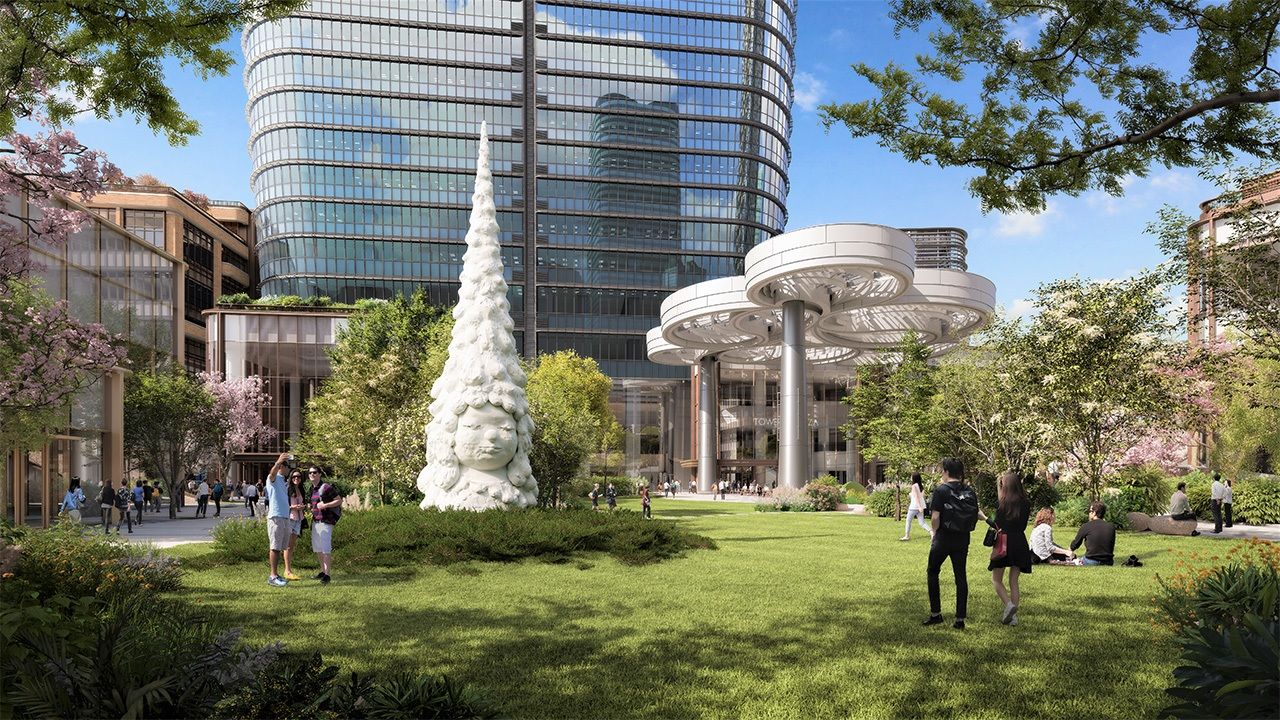
The 6,000 square meter Central Green. A grassed area featuring public art, the 2023 Miss Forest in Tokyo by Nara Yoshitomo. (© DBOX for Mori Building/Azabudai Hills)
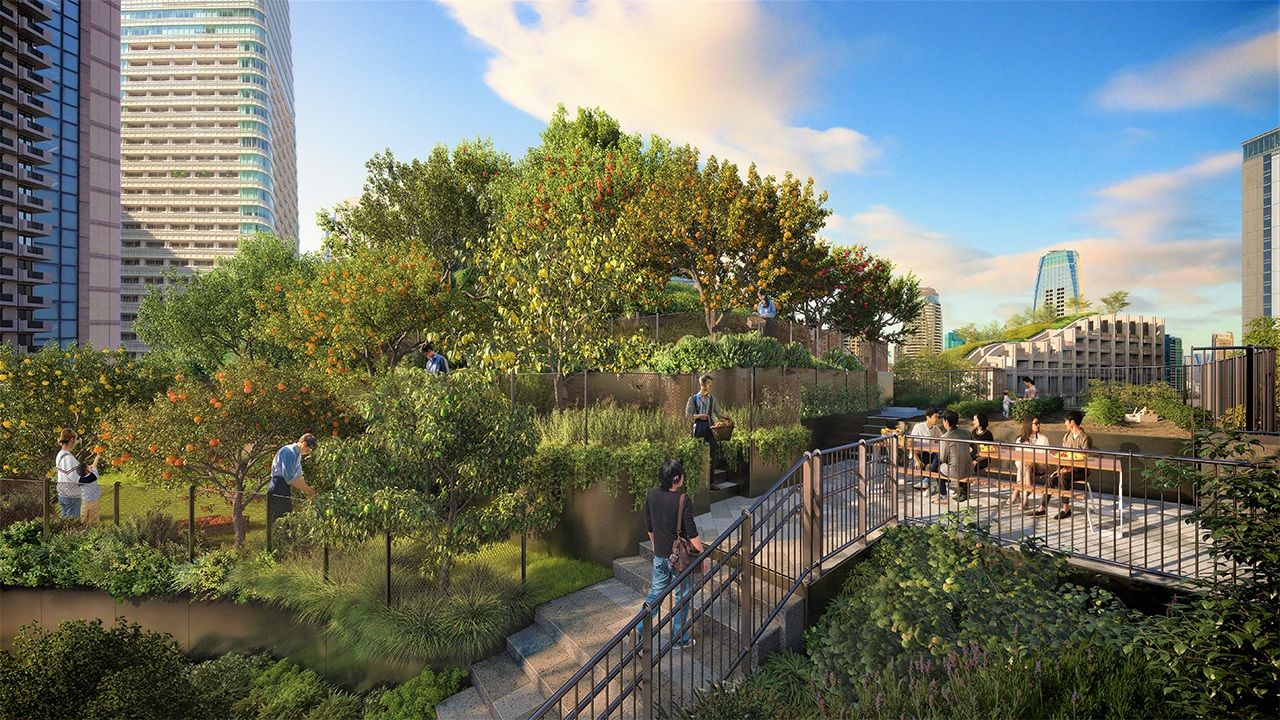
Rooftop gardens have 11 types of fruit trees, including blueberries, lemons, and peaches, along with herbs. (© DBOX for Mori Building/Azabudai Hills)
A Venture Capital Hub and an International School
The expansive development has three main towers, including a 54-story residential and hotel tower and two 64-story structures, including the 330-meter Mori JP Tower, which takes the crown from Osaka’s 300-meter Abeno Harukas as Japan’s tallest building. Office space is expected to accommodate 20,000 workers, while the apartments will house 3,500 residents. In addition, the development is expected to attract around 3 million visitors a year.

Map of the Azabudai Hills complex. (Courtesy of Mori Building)

The occupancy plan for the Azabudai Hills structures. (Courtesy of Mori Building)
The entire complex includes around 210,000 square meters of office space incorporating features designed to support startups.
Cambridge Innovation Center , a world-class community supporting startups, opened its first Asian base, CIC Tokyo, in the Toranomon Hills complex. Japan’s first large-scale venture capital base, Tokyo Venture Capital Hub, is being established in Mori’s new development with cooperation from CIC Tokyo, bringing together around 70 leading firms from the Japan Venture Capital Association and the Japanese VC industry.
Another initiative is the creation of a new international school campus to house the British School in Tokyo’s primary school. The Azabu precinct, where Azabudai Hills is located, is highly diverse, being the base for many foreign companies and embassies. Around half the companies based in Azabudai Hills are also expected to be foreign-affiliated firms. There is likely to be strong demand for the international school, especially given that central Tokyo still has fewer such schools than most other major cities in Asia.
According to Tsuji, “for Tokyo to compete with other international cities, it must attract foreign companies and talented global players from around the world. One way to do this is improving the living environment for foreign businesspeople and their families.”
For this reason, BST was invited to establish a new campus at the site. The school was founded 34 years ago, and offers a British-style curriculum to students of over 60 nationalities. The new campus will service approximately 740 students, offering tuition from nursery to year six.
Residential and Hotel Luxury to Attract High-End Overseas Spenders
The three towers that make up Azabudai Hills will provide a total of 1,400 apartments. The highlight is the 91 units in the Aman Residences, on the top floors (54–64) of the Mori JP Tower. Aman, which operates luxury resort hotels particularly in Southeast Asia, the Americas, and Europe, has helped create this preeminent and exclusive residence in Japan.
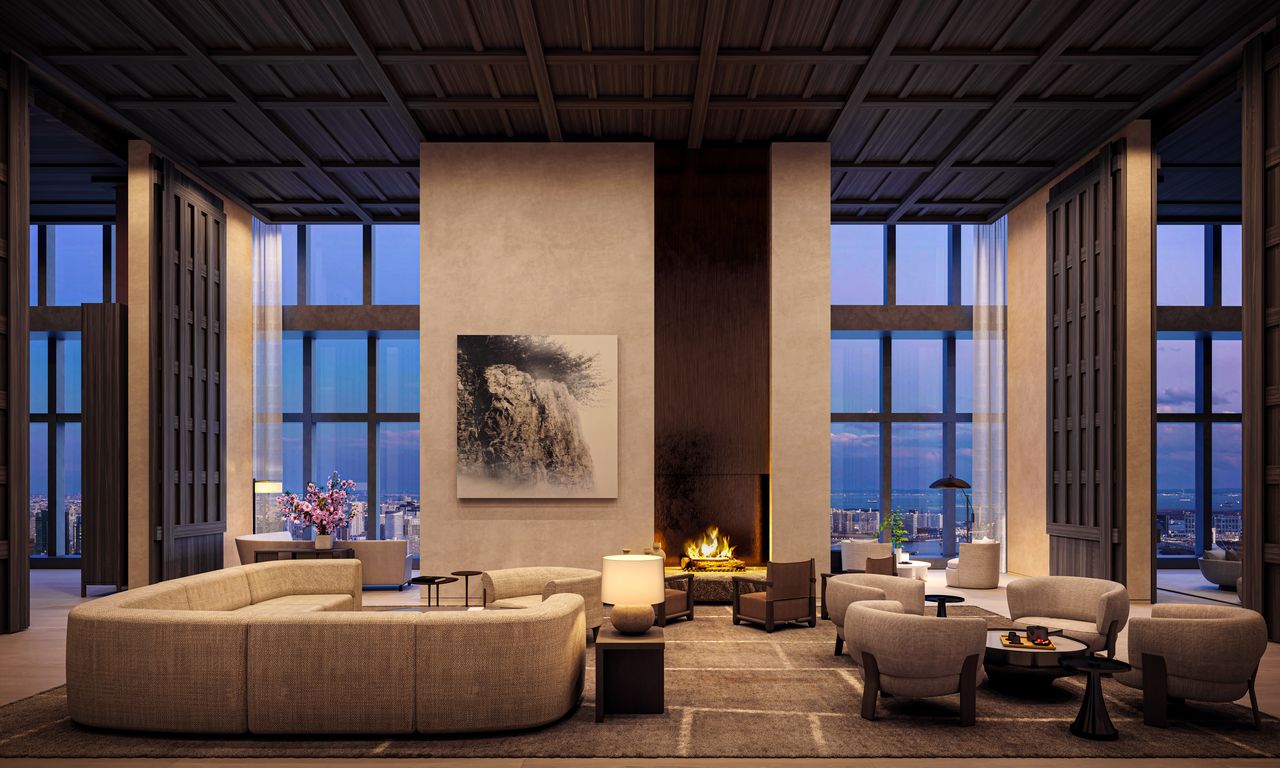
View of an Aman Residence lounge area. (Courtesy of Mori Building)
Aman will also operate the world’s first hotel of its Janu brand, Janu Tokyo, on floors 1 to 13 of the Residence A building. The 122-room hotel, which faces the Central Green, features wellness facilities including a fitness gym and spa houses, as well as bars and restaurants.
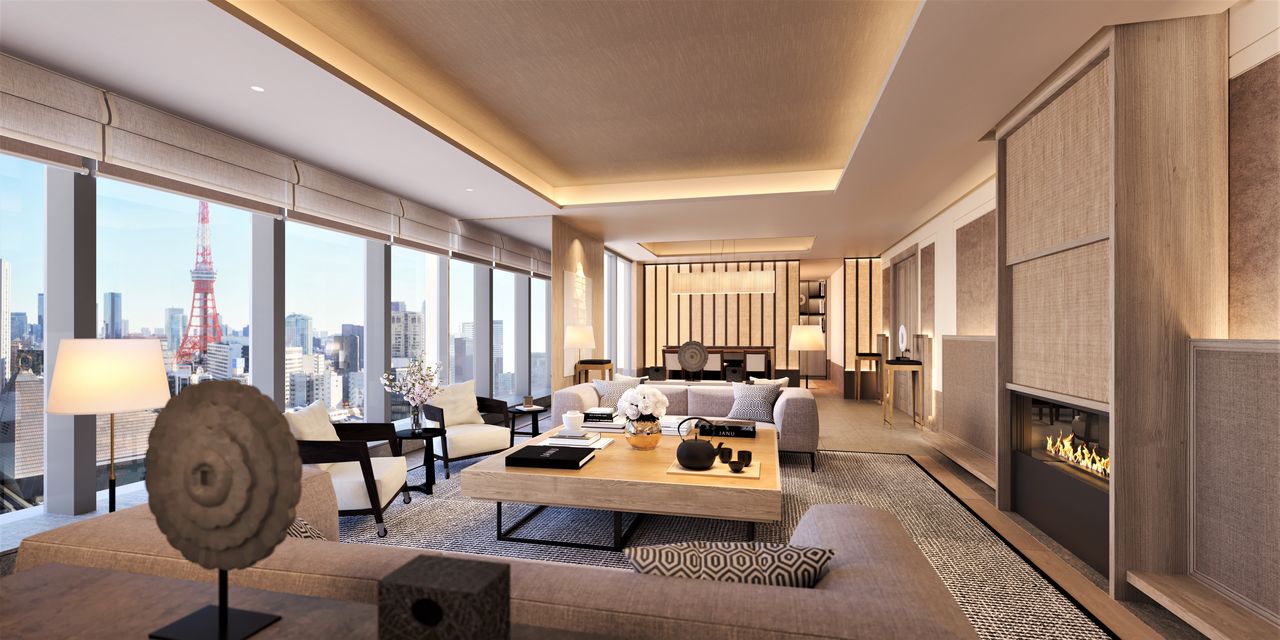
A guest room in the Janu Tokyo. (Courtesy of Mori Building)
The retail facilities, with around 150 dining establishments and luxury brand stores, are adjacent to the Azabudai Hills Market, in the basement of the Central Green area. This 4,000-square-meter food market features 31 specialty shops and delicatessens offering fresh seafood, baked goods, and more. This association of specialty stores will collaborate with educational institutions and corporations on market research and other projects.
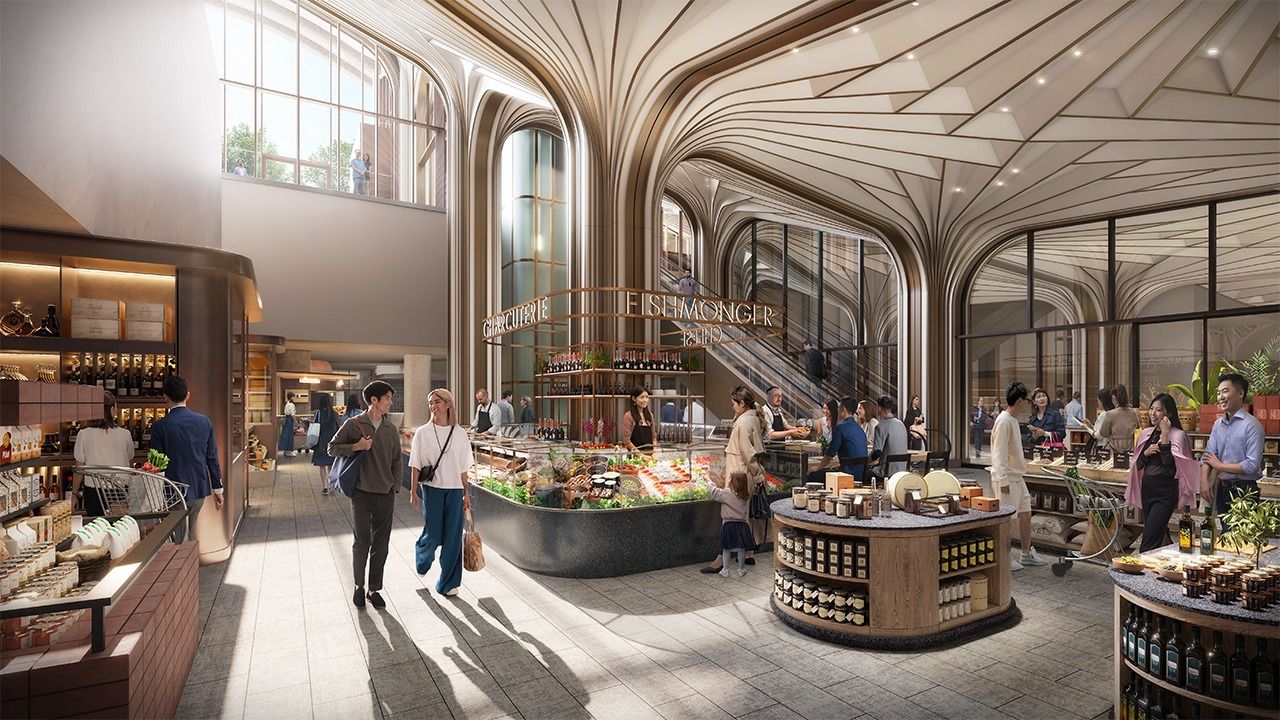
The complex’s food market. (© DBOX for Mori Building/Azabudai Hills)
Cities to Escape To
No overview of the development would be complete without touching on the seismic and other disaster-preparedness measures.
According to Mori Building, the three towers use an effective balance of high-strength steel and concrete in their structures, along with vibration-control devices in the cores of the buildings. They are outfitted with underground power-generation running on medium-pressure gas, which is resilient in disasters, to secure the safety of residents and business continuity even in the case of a megaquake rivaling the Great East Japan Earthquake of March 2011.
The development includes a 6,000-square-meter space to provide temporary accommodation to approximately 3,600 people from the surrounding area should they be unable to return home in an emergency situation. Together with the Toranomon Hills Station Tower, it will be capable of accommodating up to 14,000 stranded individuals, with emergency provisions for around 360,000 meals.
Currently, the 828-meter high Burj Khalifa in Dubai, the United Arab Emirates, is the world’s tallest building. The , measuring 632 meters. China and the Middle East dominate the list of the world’s tallest buildings, with the Mori JP Tower not even making the top 100. (The 634-meter Tokyo Skytree is classified as a tower, not a building.)
But while they may lack in stature, Japanese high-rise buildings excel in other regards. According to Tsuji, Azabudai Hills is a model for future super high-rises when judged comprehensively in terms of the quality and diversity of benefits offered in proportion to their floor space and number of users, as well as the consideration of safety measures.
He states that there is “no culmination in town planning.” The company is currently engaged in the Roppongi 5-Chome redevelopment project, with over 1 million square meters of floor space, which will also be a model “Hills of the future.”
A Short-Lived Stay at the Top
Since the start of 2023, Tokyo has seen a succession of new high-rise complexes open. In March, Mitsui Fudōsan opened its 45-story Tokyo Midtown Yaesu, and the Tōkyū Group opened its 48-story Tōkyō Kabukichō Tower in April. On August 24, the 28-story Dōgenzaka-dōri complex opened on the site of the old Don Quijote Shibuya store on Bunkamura-dōri, comprising a luxury hotel, offices, and retail space.
In 2027, a new redevelopment adjacent to the Nihonbashi Exit on the northern side of Tokyo Station is set to include a 63-story, 390-meter tower named Tokyo Torch. It will overtake the Mori JP Tower in Azabudai Hills to become Japan’s tallest building.
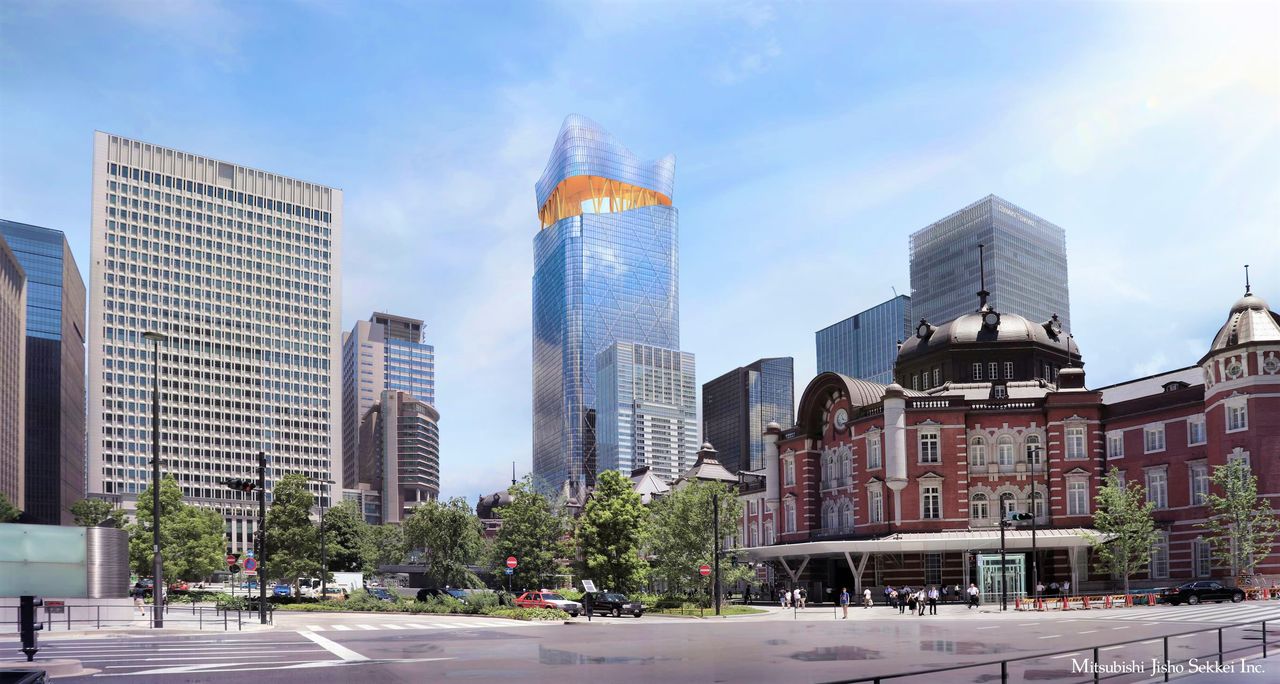
Exterior of the Tokyo Torch large-scale redevelopment district near Tokyo Station. Its 390-meter main tower is scheduled to be completed in 2027. (Courtesy of Mitsubishi Estate; © Jiji)
(Originally written in Japanese. Banner photo: Azabudai Hills viewed from the Kamiyachō Station direction. The high-rise building on the left is the Mori JP Tower, with its distinctive petal-like top and gently curved edges. Courtesy of Mori Building.)